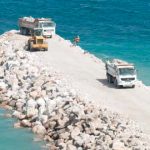Moving the goods
Economic growth means more freight traffic. But while Morocco’s shipping and rail sectors are up to the task, its road sector has a way to go before it can meet the country’s growing transport demands.

Omar El Kadiri
CEO, Globex/Fedex
Morocco’s freight needs are met primarily by road and sea. The country’s harbors are key to the import and export of manufactured goods, whereas the roads are vital for domestic demand and for certain exports such as agricultural produce.
But Morocco’s inefficient allocation of transport resources makes for excessive transport costs. According to the Moroccan road transport association (FNTR), these costs account for an estimated 20% of GDP. With more efficient logistics and warehousing, the cost of logistics could drop to 15% of GDP by 2015.
Fortunately Morocco recognizes the importance of having a good transport infrastructure for economic development. This is shown in its five-year national plan for 2008-2012 which calls for investments of $18 billion. The next five-year plan will continue that effort.

Roads
According to the Ministry of Equipment and Transport, Morocco has 60,000 kilometers of roads, of which 33,000 are paved. It has increased the network of divided highways from 600 kilometers in 2005 to 1,400 in 2010. This has been financed via public-private partnerships and toll systems for intercity stretches.
The remaining 27,000 kilometers of roads are mostly unpaved. The transport ministry, however, has embarked on a paving program partly linked to the development of agricultural clusters (agropoles) requiring an efficient connection to the supply chain.
Morocco’s road transport industry is fractionalized. According to the transport ministry, nearly 837,000 commercial vehicles were registered in 2011. The road haulers association (FNTR) states that 56,600 vehicles are registered with their members but most of these are more than 14 years old and 90% of their member companies have three or fewer vehicles.
Morocco plans to make the sector more efficient by re-structuring the larger professional entities, the small and mid-sized entities, and the informal owner-operator entities that operate at a loss by offering below-operating cost services.
Rail
In contrast to the road system, Morocco has the most extensive rail network in the Maghreb. Approximately 1,900 kilometers of track (of which 20% are dual tracks) are operated by the state-owned ONCF. In 2011, ONCF carried 28 million passengers and 32 million tons of freight.
However, 70% of the freight ONCF carries is phosphates, which will soon be transported by more efficient pipelines. ONCF is seeking replacement goods, including cereals and other agricultural produce, perhaps in containerized forms. But ONCF faces an uphill battle since the country’s geographic disposition is not as conducive to rail freight as to road freight. The distance from Tangier to Casablanca, for example, is only 350 kilometers.
ONCF is also focused on increasing ridership. Morocco has invested heavily in upgrading its rail infrastructure, improving rail beds and rolling stock and installing electrified overhead catenaries. These improvements have increased passenger traffic. In 2010, ONCF carried about 30 million passengers compared to 20 million in 2005.
Morocco is also soon to be the first African country to have a high-speed rail connection, linking Tangier in the north to Marrakech in the center of the country, about 750 kilometers.
Ports
With about 3,500 kilometers of coastline on the Mediterranean Sea and Atlantic Ocean, Morocco has 26 harbors, of which 11 are for mixed commercial use, another 11 are for fishing and the remainder are for yachting.
The port of Casablanca on the Atlantic is the main maritime entry point for Morocco, with more than 26 million tons of freight transiting annually. Casablanca has two container terminals and a third is being completed. It handles much of the country’s container traffic, but this is down from previous years due to competition from Tangier-Med.
Tangier-Med is a mega-project that aims to become one of the largest ports on the Mediterranean. First opened in July 2007, the port now has two container terminals and the capacity to handle over 8 million TEUs (twenty-foot equivalent units).
On the horizon is another Mediterranean port, Nador West Med, which will focus on the hydrocarbon sector and offer transhipment options for Atlantic-to- Mediterranean freight flows. ●
For more information:
Ministry of Equipment and Transport
La Fédération Nationale du Transport Routier au Maroc (road haulers)
ONCF (Moroccan railways)
Rationalizing transport
The Moroccan Agency for the Development of Logistics (Agence Marocaine de Developpement de la Logistique or AMDL) was initiated in 2011 as a semi-independent agency of the Ministry of Transport. AMDL coordinates different companies in the transport and logistics sectors: warehousing owners, freight forwarders, transport companies, and owner-operators.
By 2015, AMDL plans to make available total warehousing and logistics platform space of 2,080 hectares (eventually 3,300 ha) and 70 logistics platforms in 18 cities nationwide.
The objective is to rationalize the road freight transport segment, which is currently inefficient. The new measures of efficiency include a lowering of transport costs as a portion of GDP, meaning lower prices and greater competitive advantage for export goods, as well as lower CO2 emissions.



